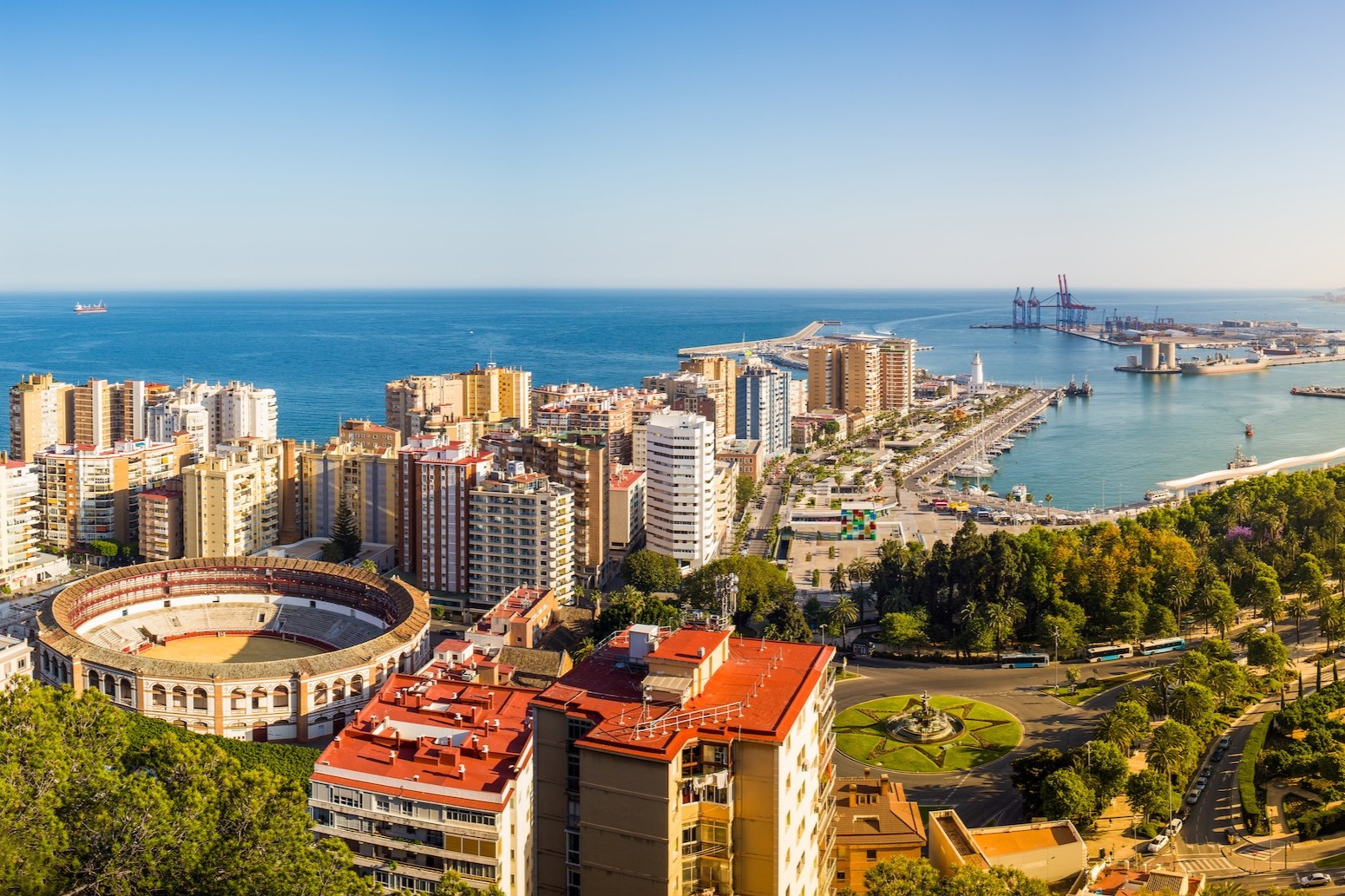Málaga – the sun-drenched port city on the Costa del Sol – is far more than just the gateway to Andalusia’s beaches. Here, thousands of years of history, Arab influences, and modern art come together. The birthplace of Picasso surprises visitors with a blend of lively city life, impressive architecture, charming alleys, and Mediterranean flair. So, anyone who believes Málaga is just a stopover for beach vacationers should definitely think again.
Top Attractions in Málaga
Alcazaba
The Moorish fortress from the 11th century towers above the city and is one of the best-preserved of its kind in Spain. Once serving as the residence of Muslim rulers, it is today an impressive example of Islamic military architecture. Winding passages, lush gardens, and striking arches turn the visit into a journey back to the Moorish era. Particularly worth seeing are the decorative archways, delicate stucco work, and water features. The view over the harbor and old town also provides unforgettable moments.
Fun Fact: The Alcazaba is directly connected to the Roman Theater via an underground corridor – a true archaeological double feature!
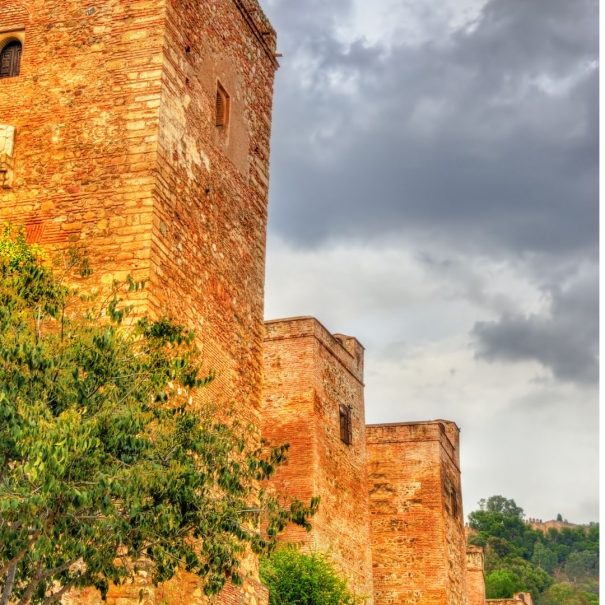
Roman Theater
At the foot of the Alcazaba lies the ancient Teatro Romano, built in the 1st century BC. It is the city’s oldest monument and once hosted theatrical performances and public events. For centuries it lay buried under rubble until it was rediscovered by chance during construction work in the 1950s. Today, parts of the seating, the stage, and the orchestra remain well preserved, offering an authentic glimpse into the Roman era. The visitor center provides insights into its history and function, and the theater is still used today for cultural events.
Cathedral of Málaga
The “Catedral de la Encarnación” is affectionately nicknamed La Manquita (“the One-Armed Lady”), because one of its two planned towers was never completed. Even so, it is an architectural highlight combining Renaissance and Baroque elements. Inside, the elaborately carved choir stalls and the enormous organ are particularly impressive.
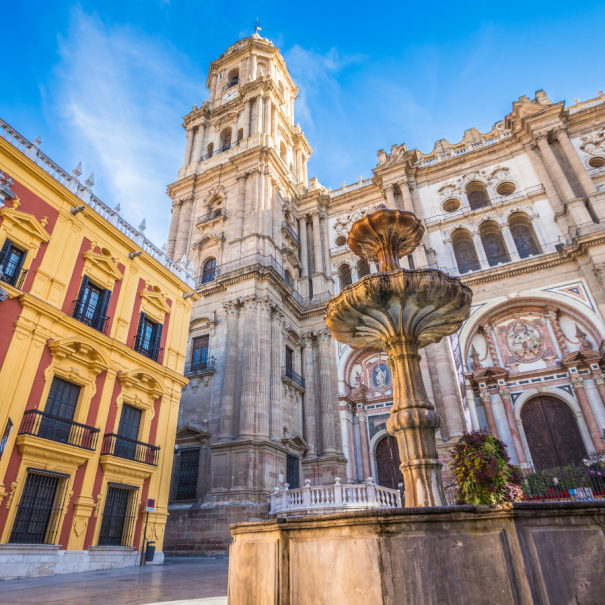
Castillo de Gibralfaro
High above the Alcazaba stands the Castillo de Gibralfaro, a fortress from the 14th century. A walk along the fortress walls rewards visitors with panoramic views of the city, the harbor, and on clear days, even Africa. The climb may be sweaty, but it is absolutely worth it.
Harbor & Muelle Uno
Málaga’s harbor is no longer just a docking point for cruise ships but a vibrant hub. At the modern Muelle Uno, restaurants, boutiques, and bars invite guests to relax with a sea view. Especially in the evening, when the city lights reflect on the water, the atmosphere is enchanting. Art and cultural events also regularly take place right on the promenade.
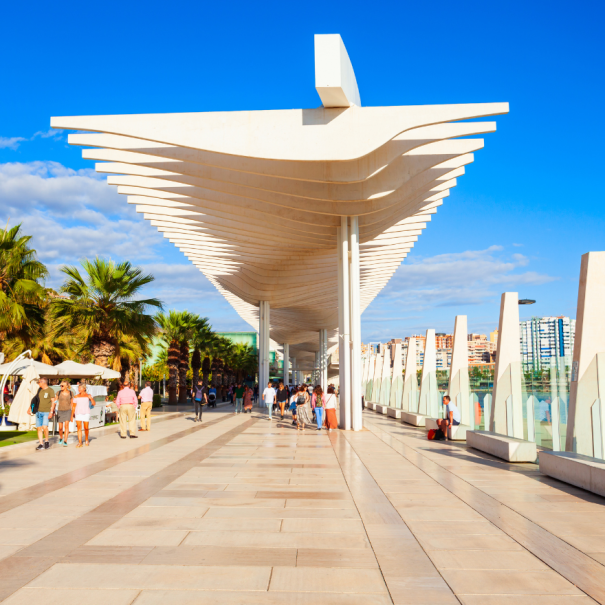
Best Scenic Viewpoints
Mirador de Gibralfaro
This viewpoint offers the classic postcard view of the bullring, the harbor, and the city. A paved path leads up from the center, so it can be reached on foot or by bus. Especially at sunset, the scene transforms into a sea of orange and pink hues. Many visitors combine the stop with a walk to the Castillo de Gibralfaro.
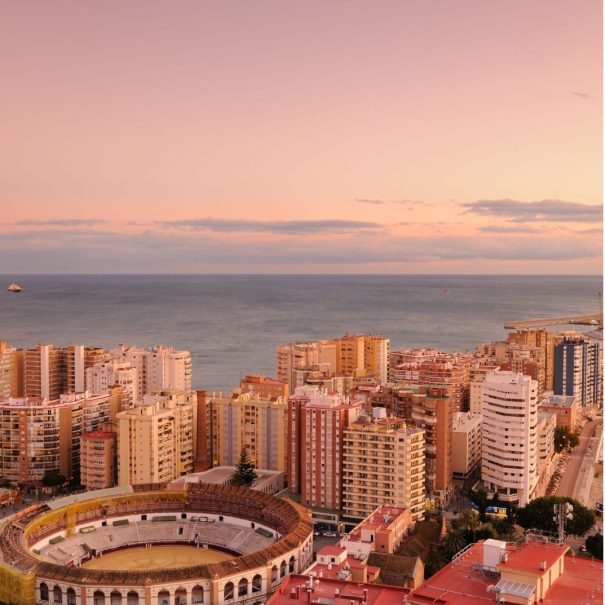
Rooftop Bars in the Old Town
Several hotels and bars in Málaga feature rooftop terraces with breathtaking views – for example, the rooftop bar of the AC Hotel Málaga Palacio. From here, you can see the cathedral from a unique perspective, with the harbor sparkling in the background. In the evening, when the old town is illuminated, the atmosphere becomes truly magical. A drink overlooking the cathedral makes for an unforgettable (and slightly luxurious) evening.
Fun Fact: Málaga enjoys sunshine on more than 300 days a year – the perfect conditions for rooftop drinks without umbrellas.
Monte Victoria
A less touristy viewpoint is Monte Victoria. Here, visitors can enjoy a relaxed atmosphere away from the crowds and a wonderful view over the bay of Málaga. The spot is especially popular among locals, who often gather here for picnics or to watch the sunset. The climb is a bit more challenging, but well worth it for those seeking an authentic alternative to Gibralfaro.
Culinary Highlights For Food Lovers
El Pimpi
Probably the most famous restaurant in town, El Pimpi is more than just a place to eat – it’s an institution. In its rustic setting, tapas and Andalusian specialties are served, including the famous Iberian ham and regional wines. Particularly impressive is the massive bodega, whose barrels have been signed by famous guests. The walls are adorned with photos of personalities who have dined here, including Málaga-born Antonio Banderas. For an authentic atmosphere, this is the place to be.
Mercado Central de Atarazanas
The 19th-century market hall is a paradise for food lovers. The building itself impresses with its Neo-Moorish architecture and its magnificent stained-glass window depicting scenes from Málaga’s history. From fresh fish and regional olives to exotic fruit, the market offers everything Andalusian cuisine has in store. The liveliest time is in the morning, when locals and chefs do their shopping. It’s an ideal spot for a snack in between or to experience everyday city life.
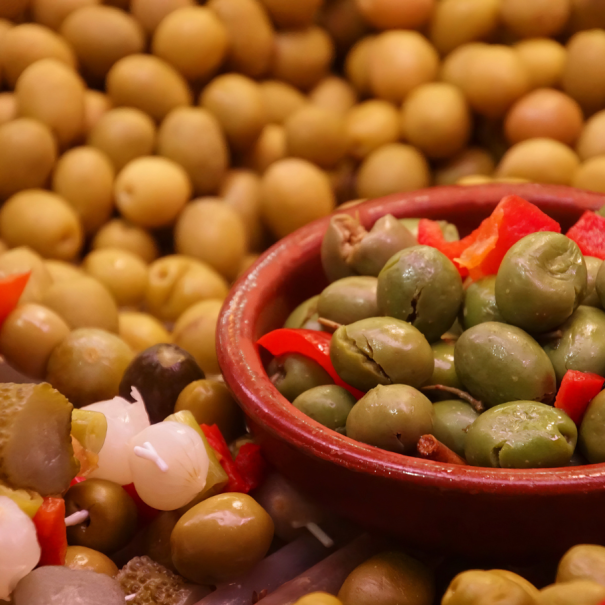
Los Patios de Beatas
This stylish wine restaurant is perfect for those wanting to taste regional wines. Its wine list features over 500 labels, many from Andalusia. The cuisine combines traditional and modern elements in creative dishes – perfect for a relaxed dinner in elegant surroundings. A special highlight are the regular wine tastings hosted by sommeliers, which provide fascinating insights into the local wine culture.

Discover 70+ cities worldwide with professional audio guides – and counting! Thanks to integrated navigation, you’ll easily find your way, even without an internet connection. Whether it’s famous highlights or hidden gems – Plazes brings exciting tours and vivid stories straight to your smartphone. Completely free and no registration required. Download now and get started!
Insider Tips & Hidden Gems
Jardín Botánico La Concepción
Just outside the center lies this lush botanical garden, created in the 19th century by wealthy merchant families. Covering about 23 hectares, it houses exotic plants from all over the world, including rare palms and tropical species. Romantic pathways, small waterfalls, and pavilions make it a perfect retreat. Particularly stunning is the “Path of Jacarandas,” which bursts into a sea of purple blossoms in spring.
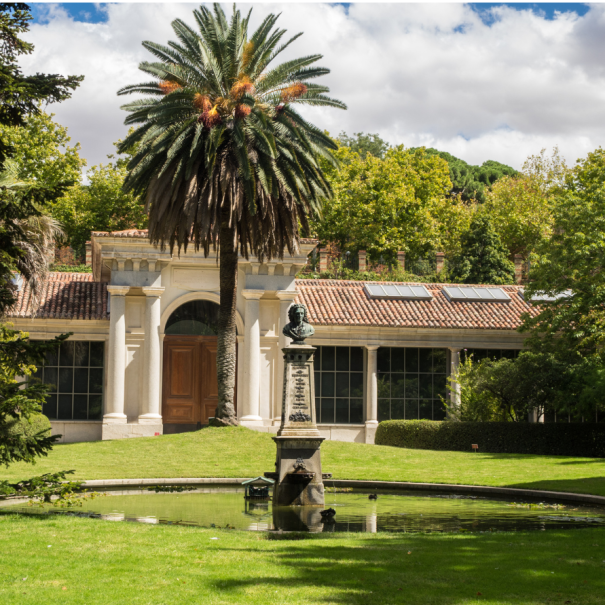
Soho District
Málaga’s creative heart thrills with street art, alternative galleries, and trendy cafés. International artists like Obey (Shepard Fairey) and D*Face have left behind massive murals, turning the district into an open-air museum. Alongside art, you’ll find small boutiques, concept stores, and innovative gastronomy. For anyone looking for a young, urban vibe, the Soho District is the perfect choice.
Pedregalejo
This former fishing district charms with a relaxed atmosphere and a beautiful beach. It is especially known for its espetos – sardines grilled on skewers over an open fire on the beach. Here, one beach bar (chiringuito) follows the next, allowing visitors to enjoy local cuisine with a sea view. In the evenings, the promenade turns into a lively meeting point for both locals and visitors.
Museums for Culture and History Enthusiasts
Museo Picasso Málaga
As Picasso’s birthplace, a museum in his honor is, of course, a must. Over 200 works provide insights into the genius’s different creative phases – from early sketches to later paintings and ceramics. The museum is housed in a Renaissance palace, whose architecture forms a fascinating contrast to the modern art inside. Temporary exhibitions place Picasso’s work in broader contexts.
Museo Carmen Thyssen
This museum focuses on 19th-century Spanish painting. The collection includes works by well-known Andalusian artists such as Julio Romero de Torres and Joaquín Sorolla. Beyond depictions of rural life and folkloric scenes, it also provides insight into the social changes of the time. The building itself – a former palace – adds to the unique ambiance.
Centre Pompidou Málaga
The colorful cube-shaped building at the harbor is an offshoot of the famous Parisian museum and the first outside France. It showcases modern and contemporary art in rotating exhibitions, including works by artists such as Frida Kahlo, Francis Bacon, and René Magritte. Even the architecture is a highlight – the colorful glass cube (El Cubo) has become a symbol of modern Málaga. For those interested in innovative art, this is a must-see.
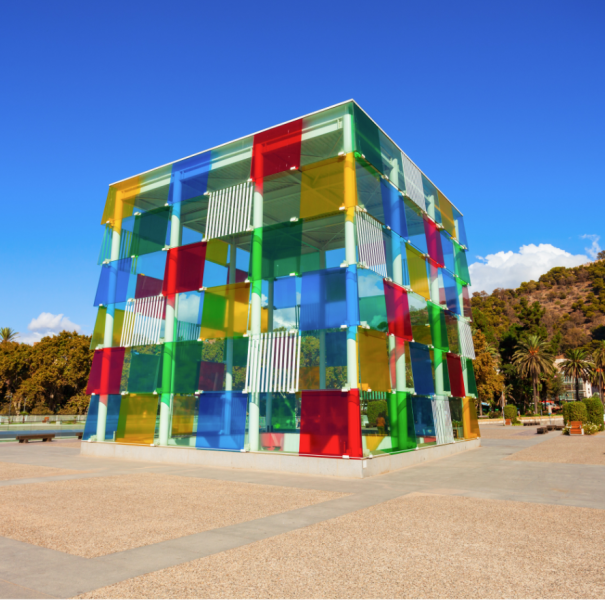
Photospots in Málaga
La Farola
The historic lighthouse at the harbor, built in 1817, is one of the few lighthouses in Spain with a female name. Especially at sunset, it creates a picturesque backdrop as the warm light reflects on the water. Around the lighthouse, there are many spots perfect for maritime photos.
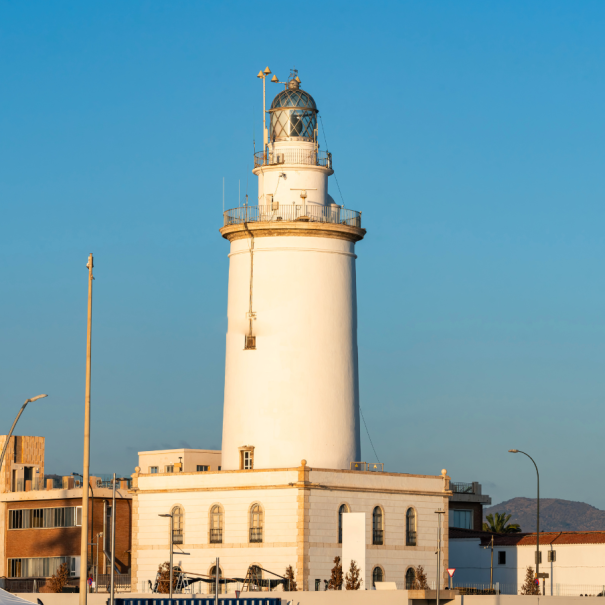
Plaza de la Constitución
This square in the heart of the old town is surrounded by historic buildings and is ideal for atmospheric photos. During festive seasons, such as Christmas, it transforms into a sparkling sea of lights. A classic fountain in the center adds extra charm. It’s also the stage for much of city life – from café culture to political demonstrations.
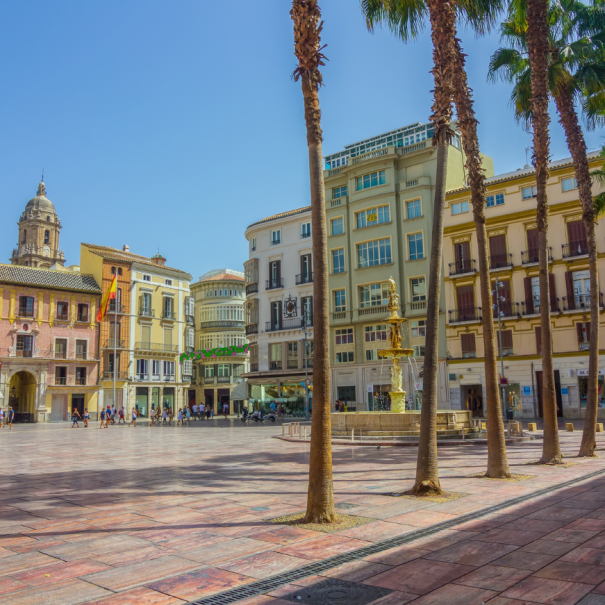
Playa de la Malagueta
The city beach, with its famous “Malagueta” sand sculpture, is a must for every vacation photo album. Located just a short walk from the center, it is one of the most visited beaches in town. Here, the blue sea meets urban flair, framed by Málaga’s skyline and surrounding mountains. Photos are especially popular in the early morning or at sunset, when the light bathes the coast in warm colors.
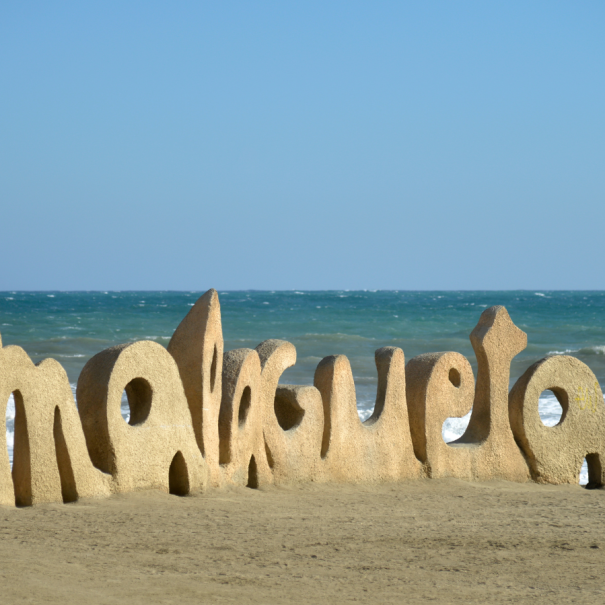
Shopping & Souvenirs
Málaga’s main shopping street is Calle Marqués de Larios, lined with boutiques, international brands, and elegant shops. For those seeking local products, small stores offer handmade ceramics, olive oil, or traditional sweets such as turrón. For a special souvenir, a visit to local artisans in the Soho District is worthwhile.
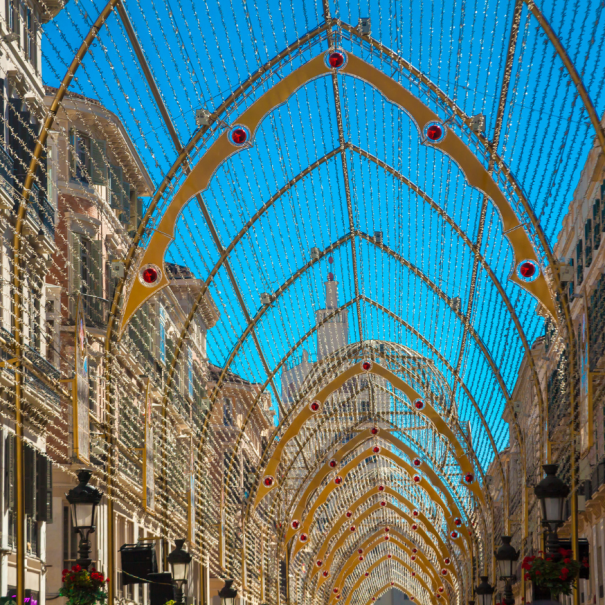
Tips for Cruise Passengers
Most cruise ships dock at Málaga’s harbor, which is within walking distance of the old town. Those who prefer not to walk can take the shuttle bus, which runs regularly to the center. Alternatively, taxis offer fixed-price routes. For excursions to the surrounding region, rental cars are available right at the harbor.
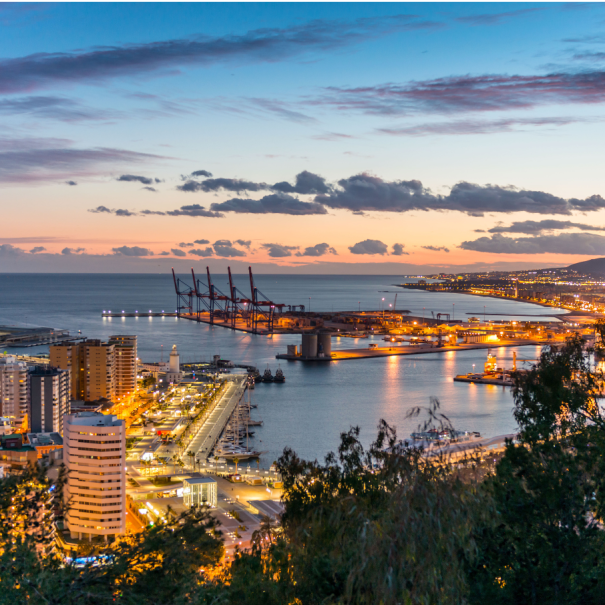
Tips for Solo Travelers
Málaga is a safe and welcoming city, ideal for solo travelers. The public transport system is well developed – buses and local trains connect not only the main attractions but also the beaches and the airport. The official tourist information office at Plaza de la Marina is a helpful point of contact. And for those looking to socialize, hostels like the “Picasso Hostel” make it easy to meet fellow travelers.
Conclusion
Málaga charmingly combines history, culture, cuisine, and beach life. From Moorish fortresses and creative districts to modern museums, the city offers something for every taste. Its mix of Mediterranean joie de vivre, cultural diversity, and relaxed atmosphere makes it a perfect destination – not only for a short stopover but also for longer stays.
FAQs:
1. Which neighborhoods are worth visiting if you’ve already seen the Alcazaba and the harbor?
Explore Soho, the street art district south of the old town, and Pedregalejo, a former fishing village with laid-back beach bars (chiringuitos). Both offer a local flair, far from the busiest tourist crowds.
2. How much time should you plan for Málaga?
For the main highlights – the Alcazaba, the Cathedral, the Roman Theater, and the Picasso Museum – one day is enough. Those who also want to enjoy beaches, markets, and viewpoints like the Gibralfaro should plan two to three days instead.
3. Which Andalusian specialties should you try?
Typical for Málaga are espetos (sardines grilled on a skewer), porra antequerana (a cold tomato soup, thicker than gazpacho), and ajoblanco (an almond-garlic soup). For something sweet: tarta malagueña with almonds and raisins. A perfect match is a glass of moscatel wine from the region.
4. When is the best time to visit Málaga?
Spring (March–May) and autumn (September–November) offer pleasant temperatures and fewer crowds. Summer is hot and lively, while winter is mild with good chances of sunny days – ideal for sightseeing without the heat.
5. What’s the best way to get from the airport to the city center – and do you need a car in Málaga?
The C1 regional train runs every 20 minutes to the main station “Centro-Alameda” (about 12 minutes). Alternatively, you can take the A-Express bus or a taxi. A car is usually not necessary in the city. You can easily reach beaches and viewpoints by bus or on foot. For excursions to Ronda, Nerja, or Caminito del Rey, trains, buses, and guided tours are convenient options.

